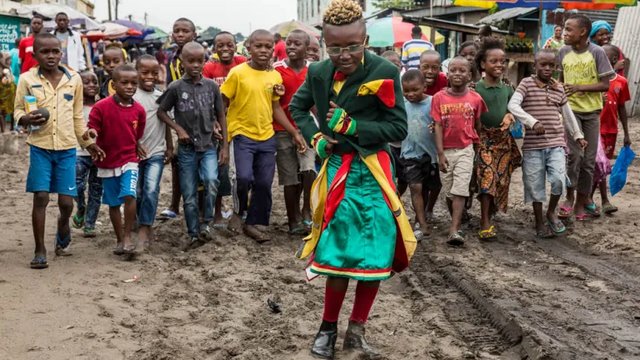In the streets of Brazzaville and Kinshasa, amid the hum of traffic and the swirl of everyday life, flashes of color catch the eye—a crimson jacket with a razor-sharp cut, a silk tie patterned in dizzying hues, shoes polished to a mirror shine. These are not merely outfits. They are declarations, stitched from the fabric of history, identity, and defiance.
This is the world of La Sape, short for Société des Ambianceurs et des Personnes Élégantes—the Society of Ambiance-Makers and Elegant People. Born in the Republic of the Congo and the neighboring Democratic Republic of the Congo, the movement elevates clothing to performance, each look a carefully constructed statement. While its origins lie in colonial-era encounters with European dress, La Sape became more than mimicry. Over decades, it evolved into an art form, an act of self-definition, and, at times, quiet resistance.
Historians trace its early roots to the late 19th and early 20th centuries, when Congolese workers and returnees from Europe adopted European tailoring as a symbol of sophistication. But in the post-independence years, it took on a sharper edge. In the hands of the sapeurs, style became a way to reclaim dignity amid hardship, transforming sidewalks into runways and life itself into a gallery. Figures like Papa Wemba, the late Congolese musician and style icon, carried its aesthetic to international stages, cementing its reputation far beyond Central Africa.
The ethos of La Sape is grounded in precision and flair. Garments must be immaculately cut and coordinated; accessories—often bold, sometimes extravagant—are chosen with care. In the interplay of pastel suits with patterned waistcoats, or in the clash of emerald shoes against a tangerine pocket square, there is a deliberate disruption of fashion orthodoxy. This balancing act between refinement and exuberance draws as much from European haute couture as from the textures, colors, and rhythms of African visual culture.
A sapeur’s attire is not assembled casually. Each choice speaks: the length of a cuff, the knot of a tie, the tilt of a hat. Outfits become visual autobiographies, referencing migration, colonial history, and the layered realities of modern Congolese identity. To walk in La Sape is to embody a living archive, one that wears its influences openly but refuses to be confined by them.
Community is central to the movement’s vitality. Gatherings—whether on street corners, in courtyards, or during formal parades—are spaces of mutual admiration and critique. These are not competitions in the conventional sense; they are exchanges of inspiration, opportunities to affirm creativity and resilience. The camaraderie among sapeurs is as integral to the movement as the clothing itself, reinforcing the idea that style, while personal, is also collective celebration.
In a global fashion landscape dominated by mass production and seasonal trends, La Sape stands apart. It is slow fashion by instinct, rooted in curation and care. Each ensemble is a singular statement, resisting uniformity while carrying the weight of tradition. In this way, La Sape is more than a subculture—it is a form of cultural diplomacy, a sartorial language that speaks of pride, memory, and the artistry of everyday life.
Sources:
- Gondola, Ch. Didier. La Sape: Transnational Circulations and Congolese Fashion. Indiana University Press, 2016.
- Gondola, Ch. Didier. Tropical Cowboys: Westerns, Violence, and Masculinity in Kinshasa. Indiana University Press, 2016.
- BBC Culture. “Papa Wemba: The King of Congolese Rumba and La Sape.” Published April 2016.

